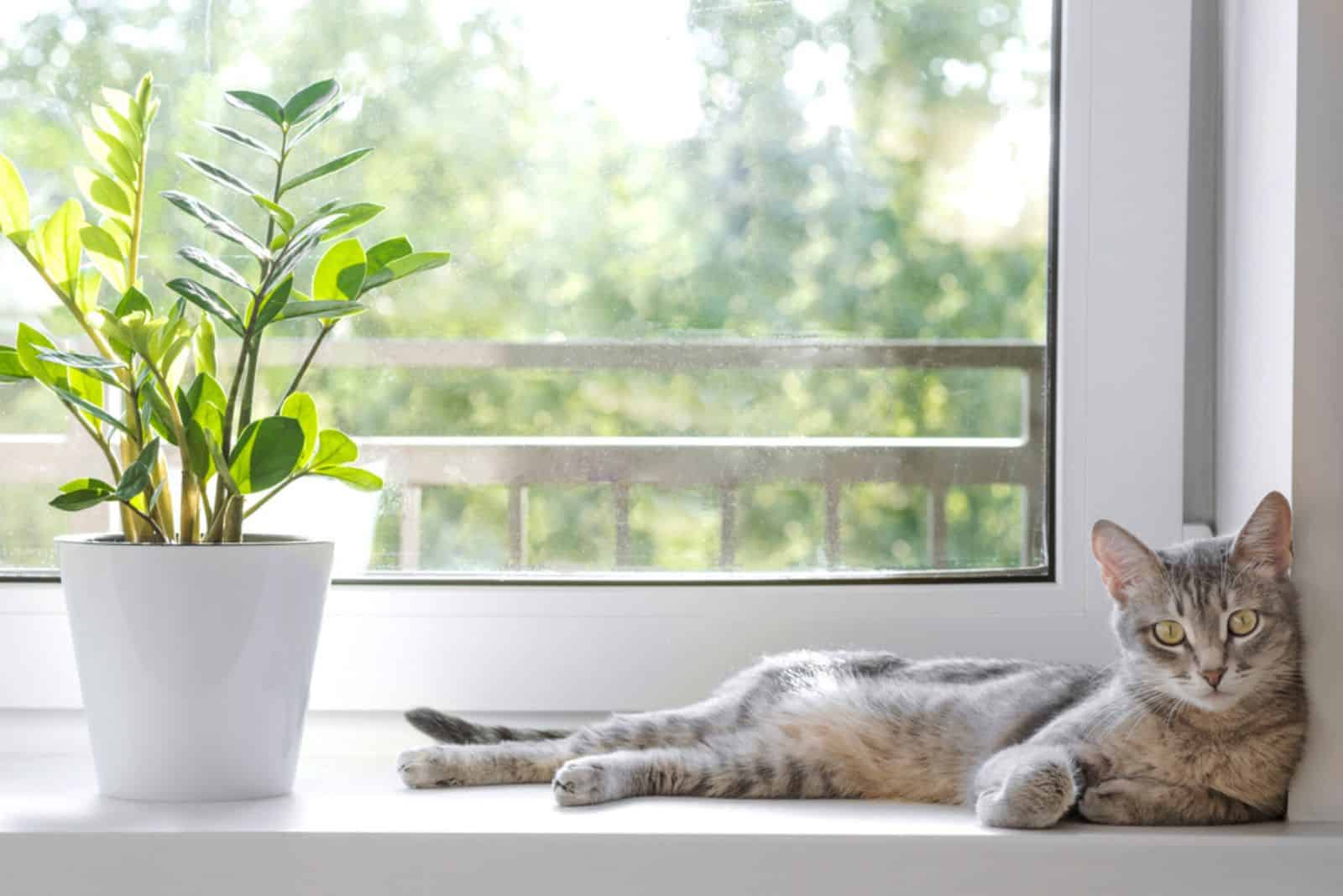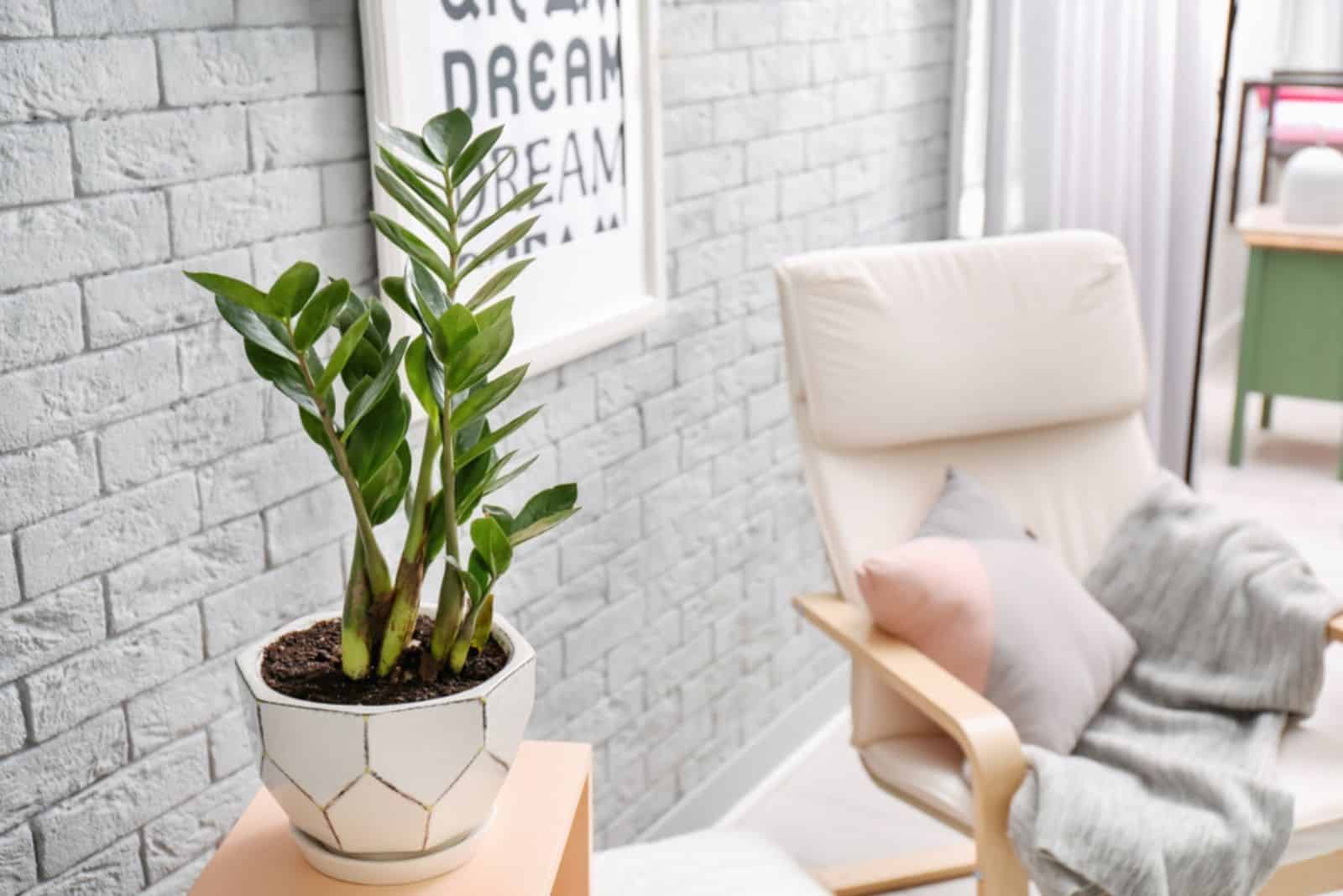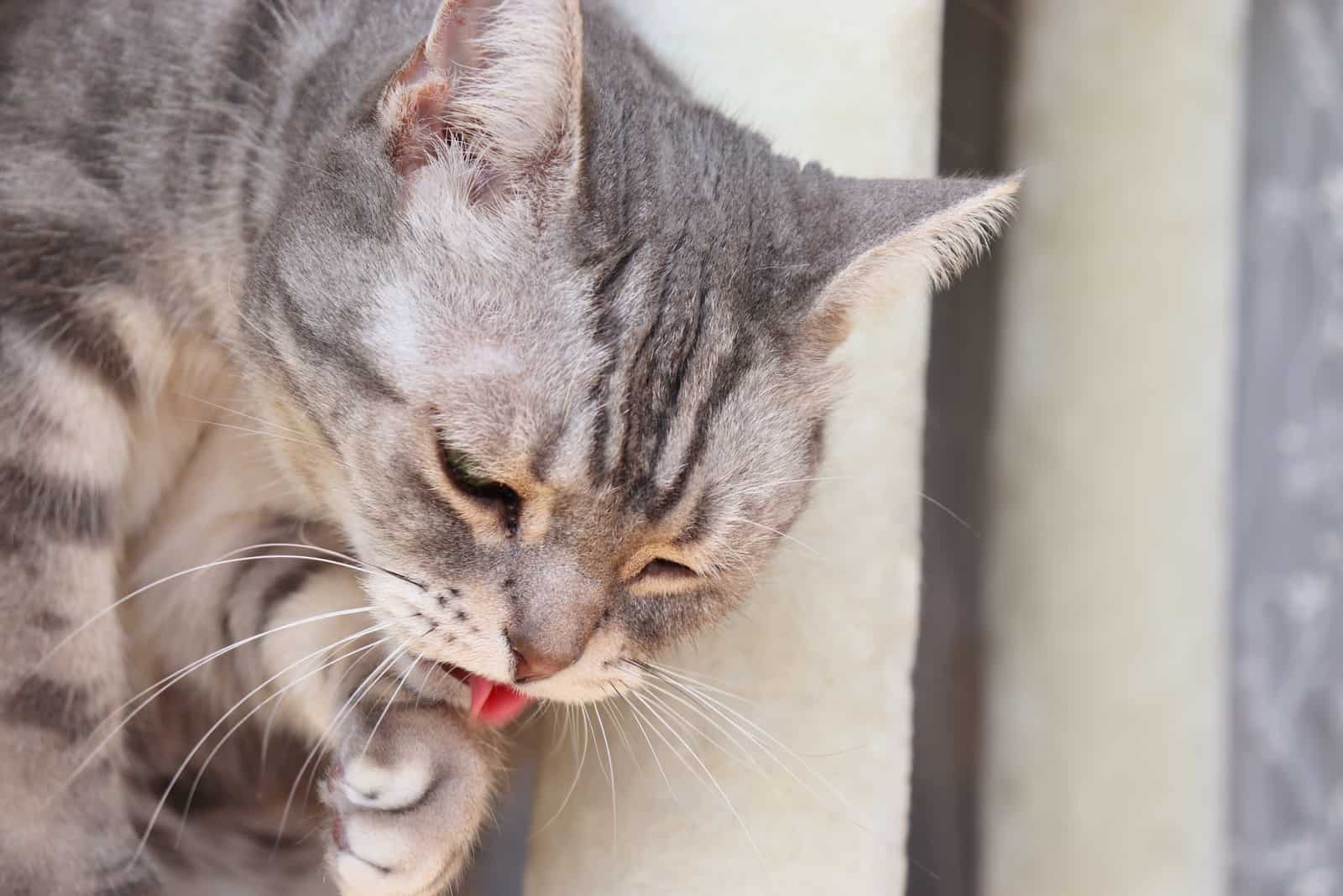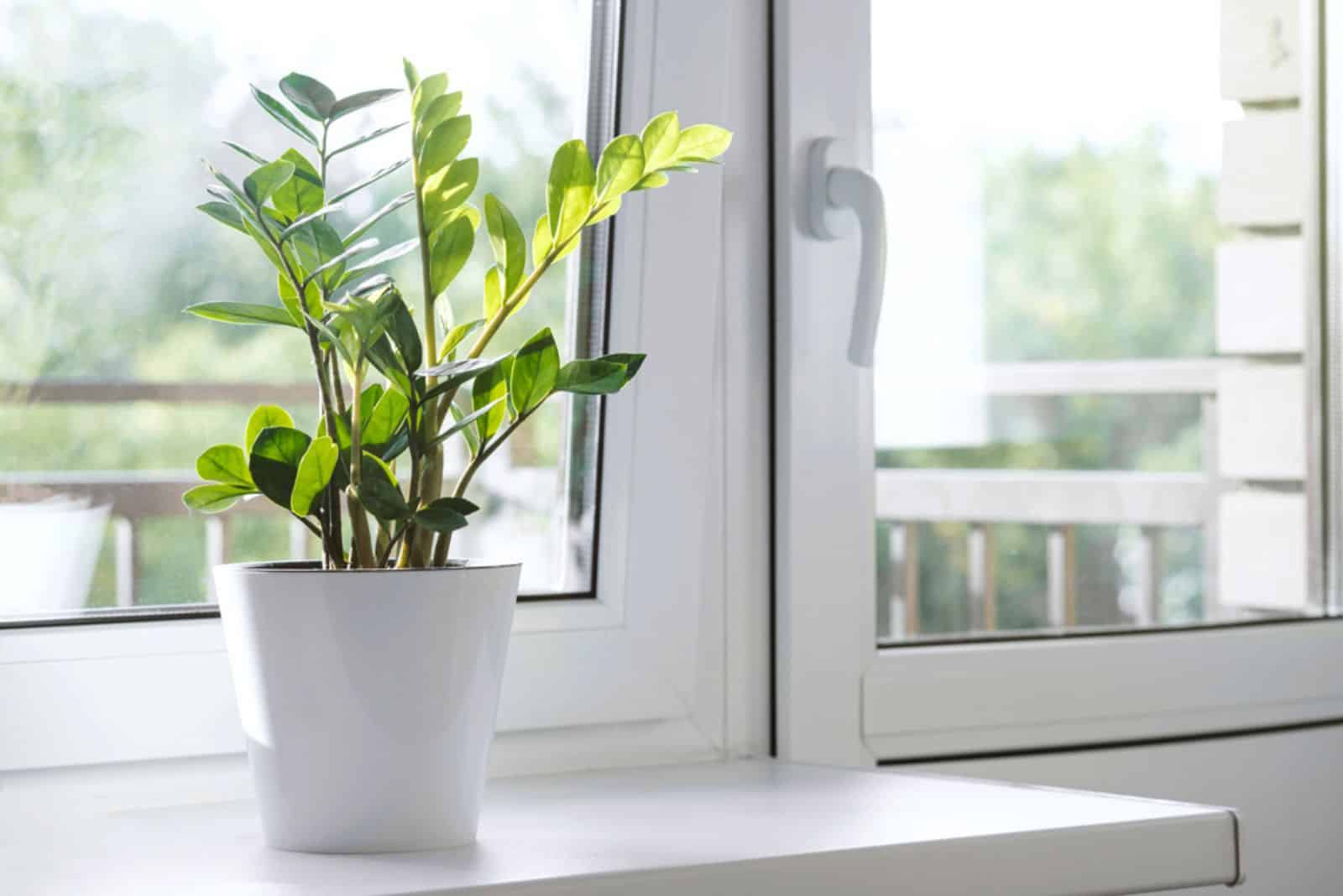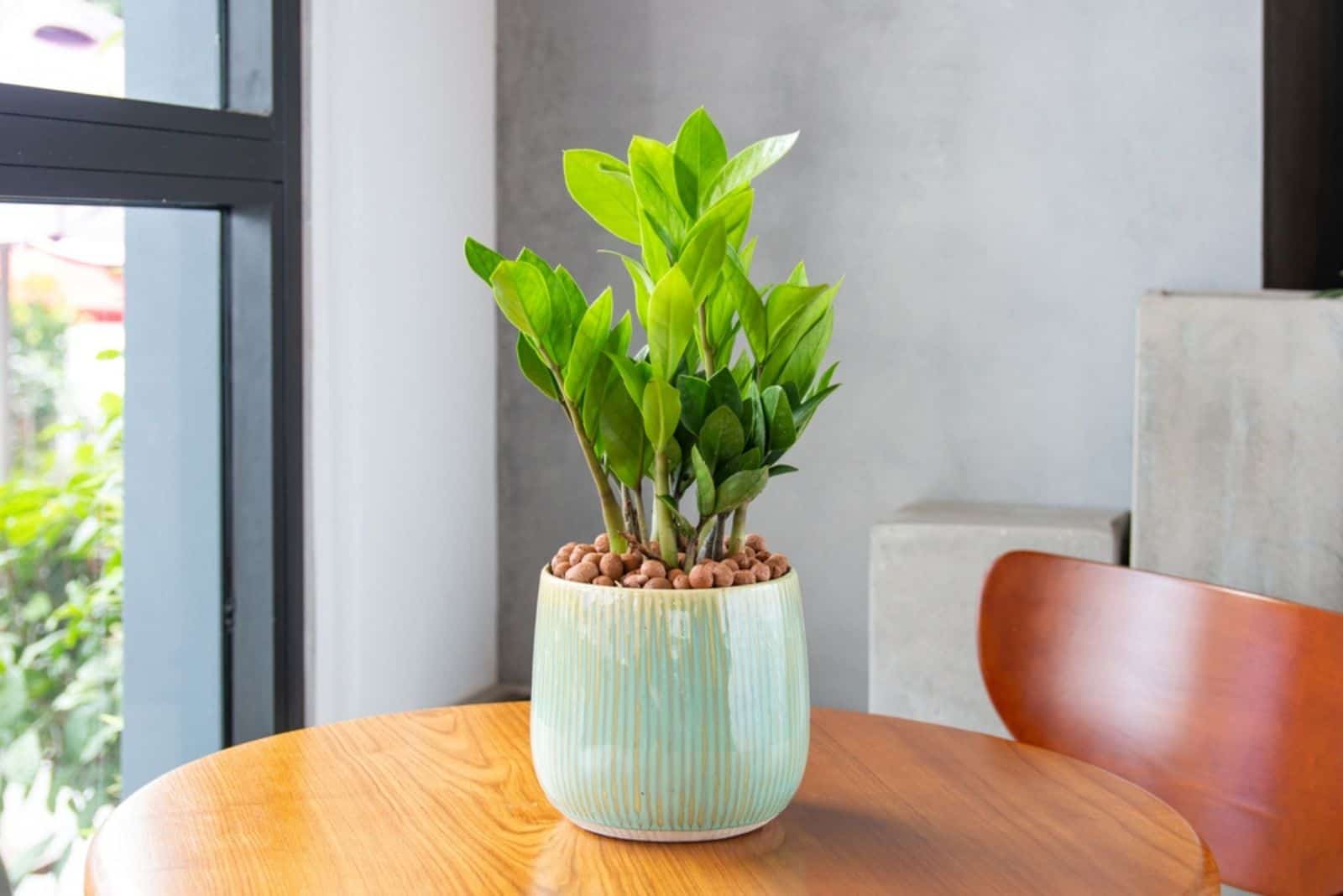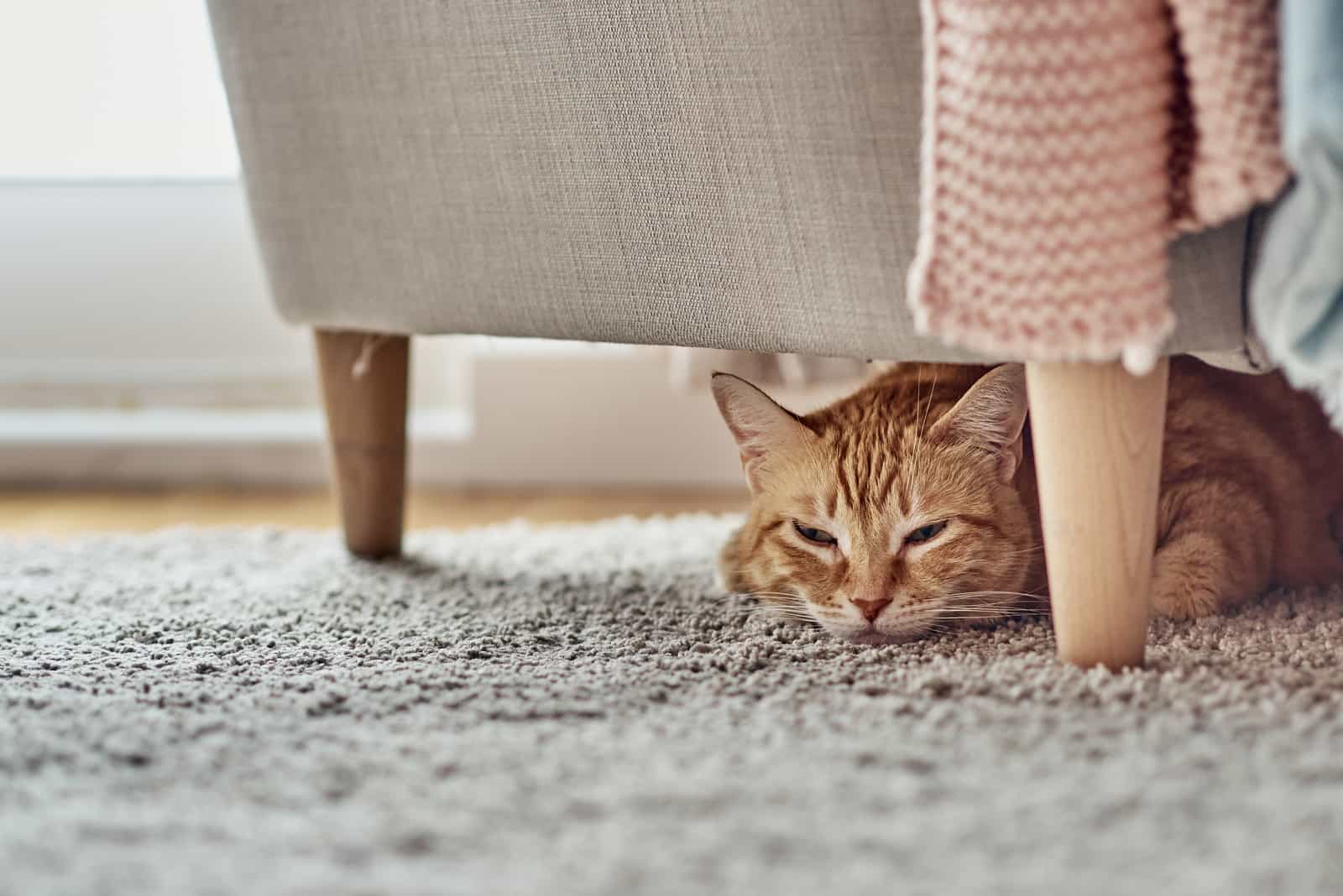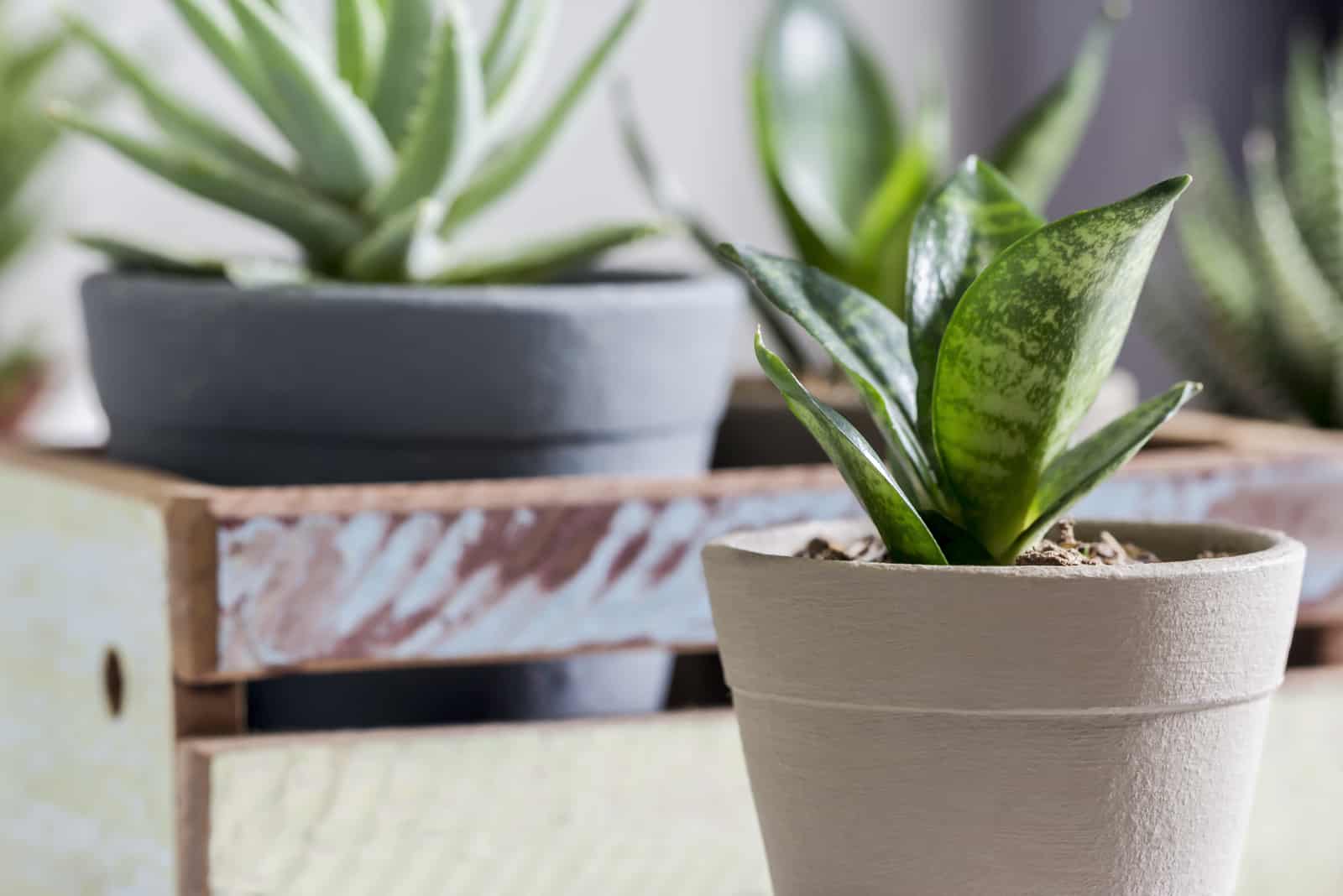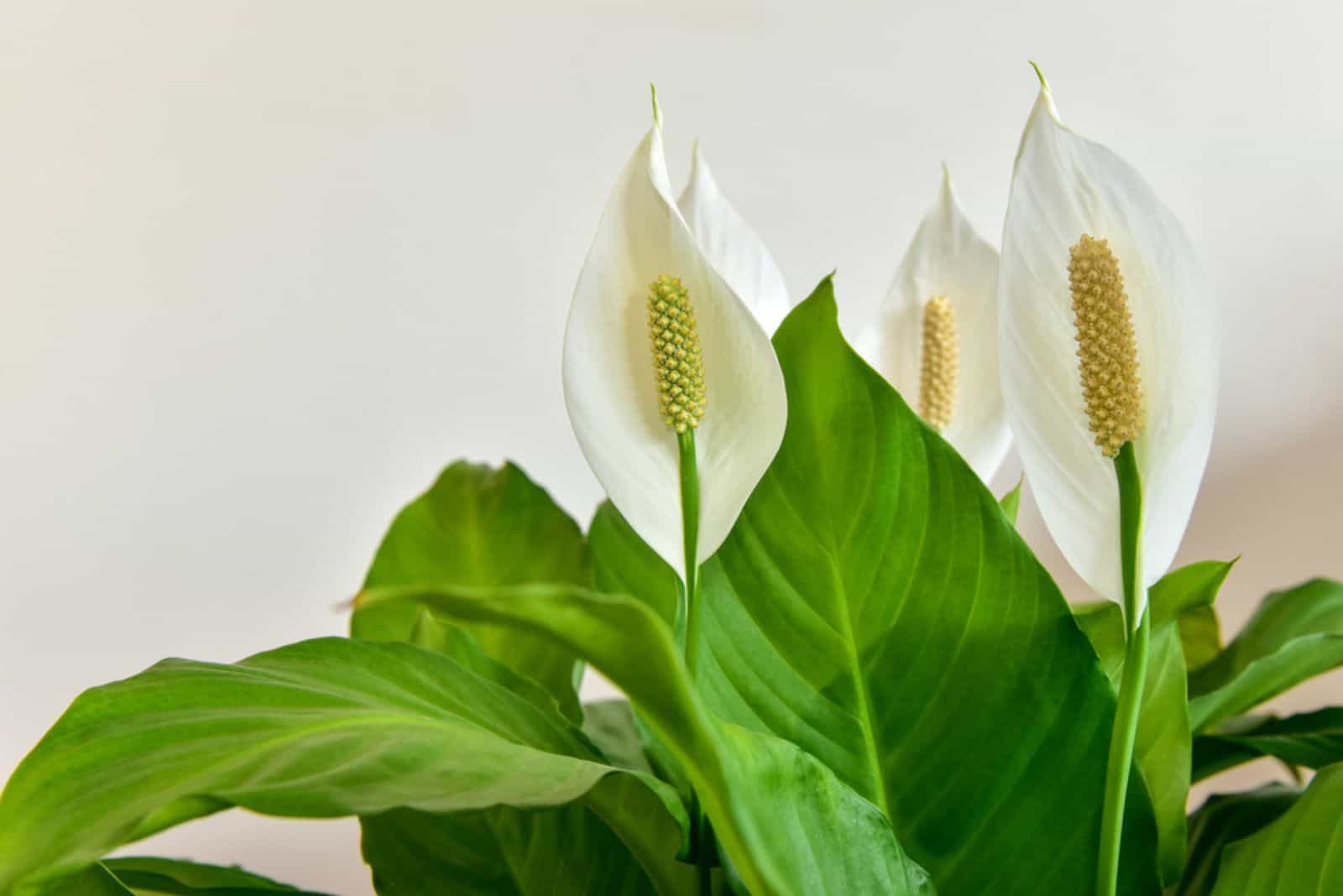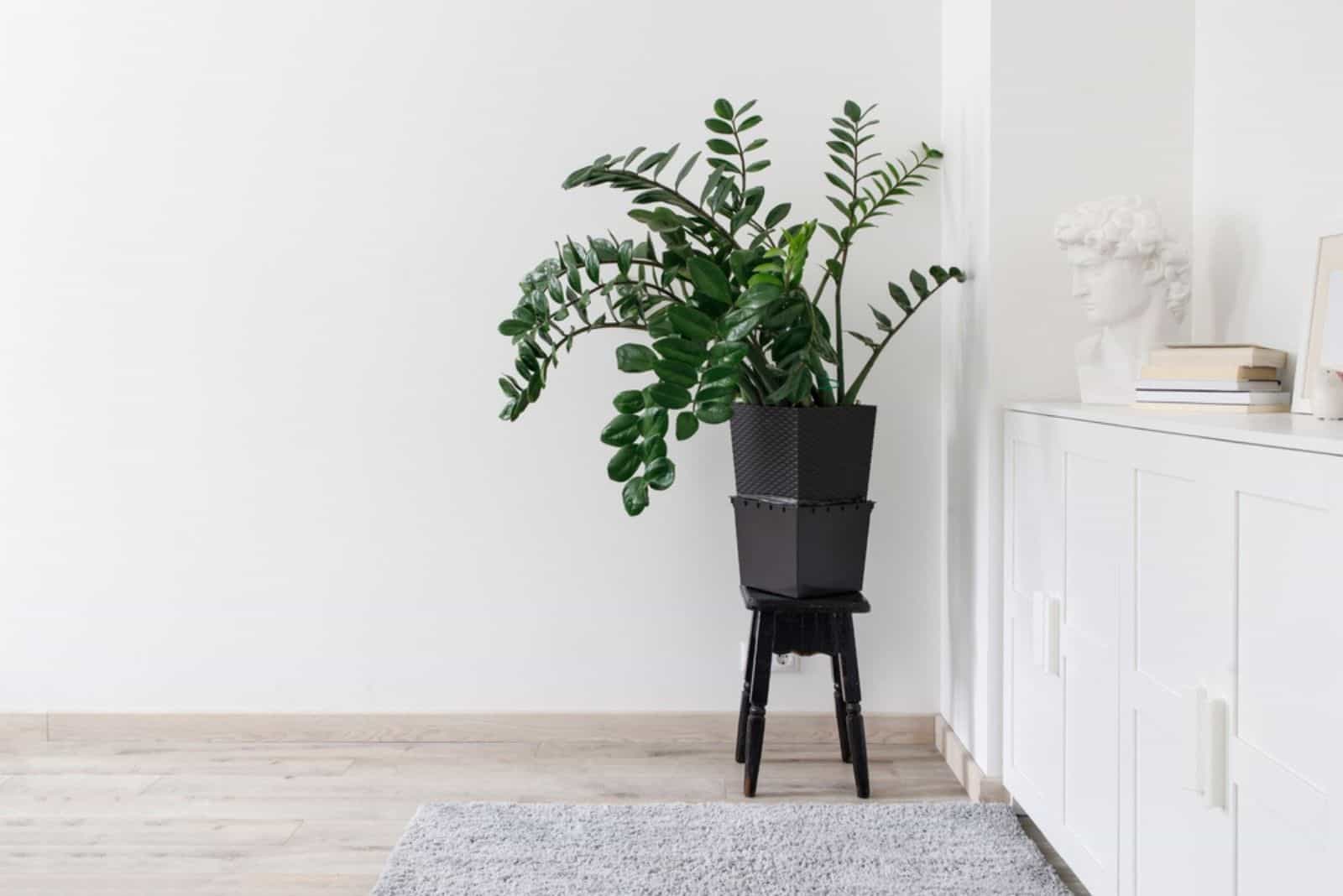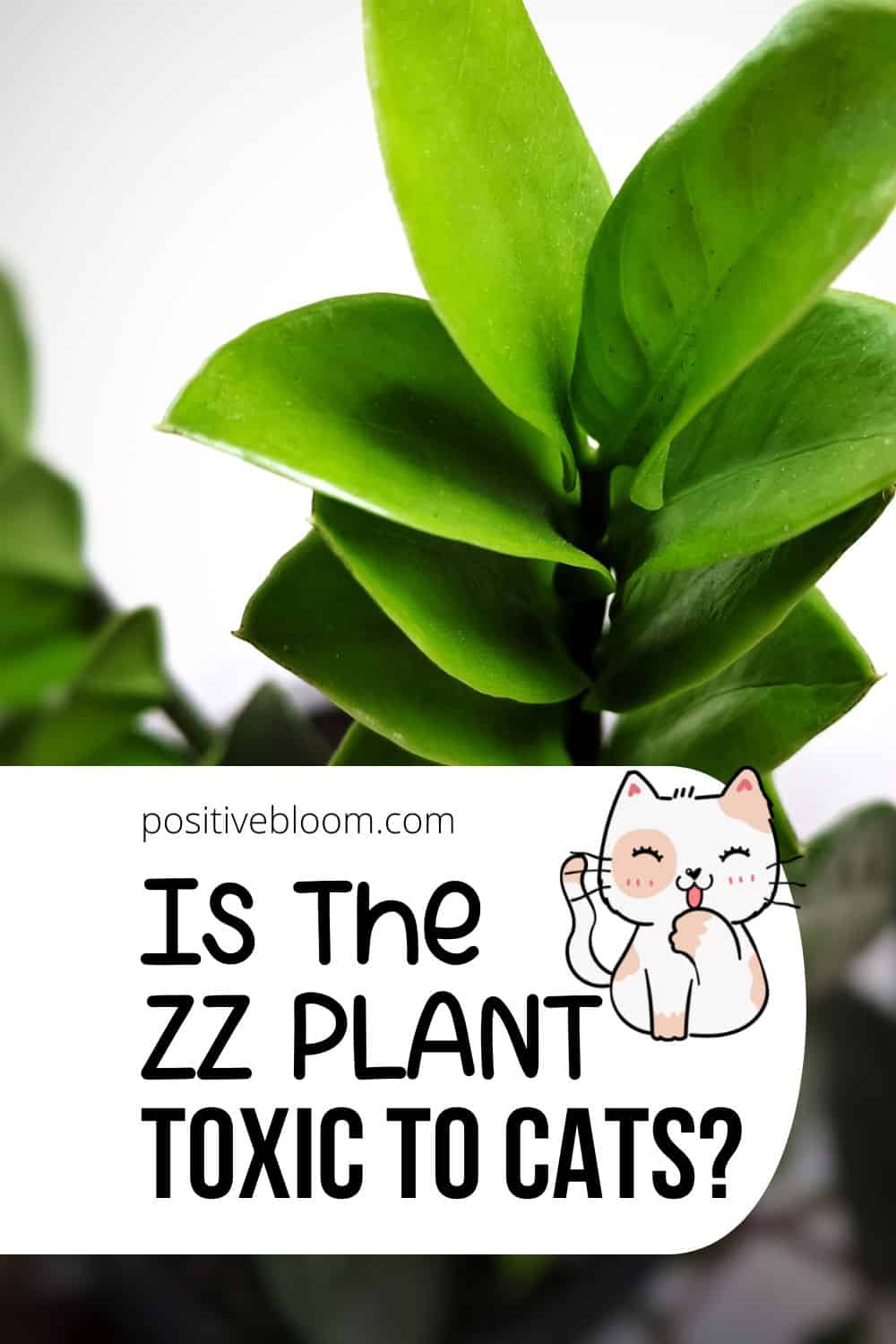If you are a plant enthusiast and a cat lover, you probably already know that some plants contain toxins that could potentially harm your pets. Once you start expanding your indoor plant collection, it’s important to find out which plants are toxic so that you can keep them on high shelves or in hanging baskets.
With its unique leaf patterns, ability to purify the air, and simple plant care, the ZZ plant makes an excellent houseplant. However, there are also drawbacks — for instance, the ZZ plant toxic to cats.
ZZ plants contain toxic chemicals which can harm pets and small children. Keep reading to find out more about these toxins and where the ideal location for this plant would be.
Why Is The ZZ Plant Toxic To Cats?
The ZZ plant, also known as Zamioculcas Zamiifolia, is undoubtedly one of the best indoor plants!
It is a hardy plant that is highly tolerable to various conditions, and even if you miss a couple of watering sessions or keep it in low lights, the plant won’t mind. As well as being hardy, this plant produces beautiful, dark green leaves that will make your room look more lively.
The ZZ plant is also commonly used in Feng shui — it is believed that this plant brings harmony into your home, improves communication between family members, and encourages support and trust.
These are just some of the plant’s best features, but what is the other side of the story?
Well, it’s sadly not as bright, mostly because this plant contains toxins that are harmful to cats. The specific toxins that make the ZZ plant poisonous are called calcium oxalate crystals.
What Are Calcium Oxalate Crystals?
Calcium oxalate is a biomineral that can be found in numerous plants. It occurs as a crystal that can have various shapes, and exists in plant tissues and organs. It is frequently generated in the vacuoles of specialized cells known as crystal idioblasts.
While these toxins might be more highly concentrated in some parts of the plant than others, every part of a ZZ plant contains these toxins. It doesn’t matter if your pet eats a leaf, stem, or root — once the damage is done, the consequences are the same!
Even though we can probably consider this as a bad trait, plants that live in the wilderness wouldn’t agree. Calcium oxalate crystals are present primarily to protect the plant from getting eaten by animals, which is why your cat won’t enjoy munching on its pretty leaves.
When the plant comes into contact with saliva or water, the crystals are ejected. The sharp edges of these crystals have the ability to penetrate the skin, which causes skin irritations and rashes.
The good news is that ingesting these crystals won’t kill your cat, but it will likely experience some pain and discomfort.
These crystals are the main cause of kidney stones — they clump together and form a solid mass that can develop into kidney stones. A diet high in oxalates, such as those found in cabbage, rhubarb, spinach, tropical fruits, or calcium, may contribute to the production of calcium oxalate crystals.
Even though Popeye taught us to eat lots of spinach, you should never overdo it!
Symptoms Of ZZ Plant Poisoning In Cats
When a cat has a nibble of the ZZ plant, the toxins touch the cat’s mucous membranes first. This immediately causes a burning sensation, so the cat might spit it out.
However, if the cat swallows the plant, the sharp crystals will upset the digestive system. The most common problems are stomach aches, diarrhea, vomiting, and nausea.
The severity of the issue depends on the amount of plant that has been ingested. For instance, if your cat just rubs against the plant, it will cause mild skin irritation.
If the cat starts eating the plant, however, it will cause burning and excessive drooling.
Upon ingestion of large amounts of the plant, the cat will likely end up with severe stomach ache and hours of diarrhea. The most important thing is that you give your cat water as soon as possible because dehydration is the biggest concern for their health.
If you notice that your cat has been drooling excessively, or if it simply doesn’t want to eat any food (sometimes calcium oxalate might cause swelling of the throat, so it might be painful for them to swallow), then you should immediately take into consideration plant poisoning, especially if you own a ZZ plant!
Your cat might also curl up into a tight ball, which is a sign of severe stomach ache caused by these toxins. Please be aware that Monstera plants are also toxic to cats, and that the symptoms are pretty much the same for both plants.
How To Treat ZZ Plant Poisoning
Unfortunately, there isn’t a remedy to reduce the effects of ingesting the ZZ plant. It isn’t as dangerous, and your cat will bounce back fast!
The risk of ZZ plant poisoning is low, however, you should check your cat’s mouth for indications of oral irritation if any plant leaves are missing or appear to have been bitten. There may be nothing you need to do if there is no swelling or redness.
However, if your pet seems to be in discomfort, you should give it some water to encourage drinking and flush out the remaining crystals. Even giving your pet some moist food to consume would benefit it.
You can always rinse your cat’s mouth with some water if it appears reluctant to consume food or liquids. Even though some might say that you should give your cat some ice cream, I strongly advise you to use cold milk instead.
You should visit the vet if the swelling doesn’t appear to go away. They will take care of your pet’s airway, administer painkillers, and possibly even give it fluids and electrolytes if the cat is dehydrated.
Animal Poison Control or your vet can be contacted if you’re unsure whether to wait or take your pet to the doctor.
How To Identify The ZZ Plant
The ZZ plant is a popular houseplant that is found in many households. In some cases, people own plants and don’t have any idea what type of plant they have, especially with these low-maintenance and hardy plants that are almost impossible to damage.
However, if you buy a new pet or you rescue a small kitten from the streets, you have to make your living space pet-safe. This includes keeping all toxic plants out of their reach. Check the section below to see what other plants are also toxic to pets.
When it comes to ZZ plant identification, there are four features to examine — roots, leaves, stems, and flowers.
The roots, also known as rhizomes, primarily serve as a reservoir of water, which is why they are so unique-looking. These rhizomes look quite similar to the roots produced by potatoes, so you can use this as a reference.
When it comes to the leaves, these plants have wide, dark green leaves with a waxy texture. Sometimes you might notice black spots on the ZZ plant’s leaves, which indicates that there is something wrong with your plant.
This plant might have several stems with multiple leaves (just like a tree!). These stems can get as long as three feet at their most, with some growing straight up and others curving. When it comes to flowering, these plants usually don’t produce blossoms. However, if the growing conditions are perfect, you might notice a few flowers around the base of the plant!
Why Is The ZZ Plant So Popular?
The ZZ plant goes by many names. Some of these include Emerald palm, Zanzibar gem, Eternity plant, Zuzu plant, and so on. When there are many names for one plant, it usually means that many folks have owned it and they didn’t know the real name, so it became popular by different names in different cultures.
Nonetheless, we know that it is the Zamioculcas Zamiifolia plant and that it belongs to the Araceae family. Many plants that belong to this family are quite popular, but there is something special about our toxic beauty!
Let’s look at some of the main reasons!
Low-Maintenance
Although Eternity plants have many benefits, their durability is what sets them apart.
These plants are low maintenance, grow well in low light, can survive somewhat dry potting soil, and don’t require a lot of trimming, unlike many other houseplants.
Due to their powerful rhizomes and succulent-like leaves that effectively absorb moisture, ZZ plants can endure drought.
Your ZZ will be understanding if you periodically forget to water your plants.
As they are slow-growing plants, repotting is not something you need to worry about too often. It won’t take much of your time because they don’t require a lot of food. I would recommend you keep them in indirect light because they are not a fan of direct sunlight, and make sure that you provide your ZZ plant with the best well-draining soil!
Air Purifying
It’s been known for some time that houseplants can purify the air. NASA’s ground-breaking research on air-purifying plants in 1989 found that plants had a remarkable capacity to remove pollutants from the air via their leaves, roots, soil, and microbes.
In other words, the ZZ plant can improve air quality. As well as ZZ plants, Spider plants are also known to be air purifying.
Plants remove the following toxins from indoor air:
• Formaldehyde: may result in a number of issues, such as irritation and nausea.
• Benzene: can weaken the immune system or lead to anemia.
• Toluene: may result in side effects such as skin inflammation, irritation, or renal damage.
• Xylene: may result in headache, vomiting, or respiratory problems.
• CO2: may make you feel lightheaded, dizzy, or have a headache.
Medical Applications
Widespread medical usage of the ZZ plant is practiced in Tanzania and Ghana.
Tanzanians cultivate ZZ plants to treat inflammatory illnesses and earaches. Shamans in Ghana treat stomachaches with the Eternity plant.
According to studies, being around plants reduces anxiety and stress, lowers sadness, and improves mood.
The health benefits of these plants go much further than that, though. Home gardening has been proven to increase creativity and productivity.
ZZ plants are a healthy way to reduce stress, elevate mood, and stimulate creativity.
Easy Propagation
The simplest approach to growing your plant collection is through propagation.
Another fantastic characteristic of the ZZ plant is how rapidly and effortlessly it can spread!
Both stem cuttings and division are viable propagation techniques. I would strongly advise the second choice if you are a beginner gardener.
How To Keep Cats Away From Plants
Though you admire the beauty of your plants by looking at them, your furry friends have a different way of showing their affection — they will either play with them or try to eat them! This doesn’t work well for your plants or your pets, especially when we are talking about toxic ZZ plant exposure.
This is why you have to use methods to keep your cats away from your plants. This is usually done by using deterrents or training your cat.
Let’s look at it in more detail!
Mulch The Soil
If you spread mulch or any other material that cats don’t like to walk on over the surface of your plant, they won’t try to dig it up. Cats can be kept away from plants by mulching them with pine needles, coffee grounds, bark, or small stones.
Cats will probably avoid plants mulched with these materials because they don’t like the way they feel on their soft paws.
Put The Plant Out Of Reach
There are numerous benefits to these plants, so most plant enthusiasts are eager to get one. However, you can’t just put it anywhere if you are also a pet enthusiast!
It might be challenging to keep it out of your cat’s reach because these little monsters can climb just about anywhere.
However, hanging a ZZ plant in a basket can add a distinctive touch to your home’s decor while also keeping your cat secure.
You might also want to place this plant somewhere high, but be careful to make sure your cat can’t climb up there.
Making a safe area just for your plants is another option, and you might also go the other way and designate a specific space for your pet. A barrier or fence should be constructed that your cat cannot cross, but it should also be comfortable for your pet so that it doesn’t want to leave in the first place.
Train Your Cat
One of the best ways to ensure that these two creatures get along is by training your cat to avoid your plants, even though your cat may not enjoy it.
Every time your cat approaches your plant or any other item you want them to avoid, such as your furniture, you can spray it with water.
Your cat won’t enjoy being splashed with water, so it will gradually learn to avoid your plants.
Another solution is to distract the cat.
Giving your cat some toys or playing with it will redirect its attention from your plant.
You can also give it some catnip, silverine, or cat thyme to gnaw on. To keep your pet active and away from your plants and furniture, you may also put a scratching post in the area set aside for it.
Cats need a lot of attention, and if you don’t provide it to them, they might start acting out in order to seek your attention.
If nothing seems to be working, you can always switch on kitty TV on YouTube. A ball of yarn or some plastic balls is another fantastic method to entertain your pet.
Use Deterrents
There are numerous repellents that can keep your cats away from plants, both homemade and store-bought.
For instance, rosemary, citrus fruit, vinegar, and coffee are all unpleasant to cats, so it could be a good idea to surround your plant with some of these scents.
You can surround your plant with lemon, grapefruit, lime, or orange peels, or even dab a few drops of citrus essential oil on the pot.
Another effective spray repellent is water mixed with a few drops of lemon juice; however, avoid using too much lemon juice as it could harm your plant.
Another spray that will deter your cat is made with water and two spoons of mustard and red pepper.
In case all of this seems like too much trouble, you can simply put some rosemary in a container close to your ZZ plant to deter cats.
If your cat is remarkably immune to all of these odors, you can always order some pet deterrent sprays from Amazon and spritz them around your plant to keep the cat away (but don’t spray them directly on the plant because that could damage it).
Some Other Toxic Plants
As we already mentioned, many plants contain calcium oxalate in their leaves, stems, roots, and flowers. Some of these plants are also popular houseplants, which is why we must get familiar with them — especially if you have little kids and pets running around.
Here is a list of toxic plants that could harm you and your pets.
Snake Plants
Cats are poisoned by the saponins found in snake plants. Although not especially potent, this element protects plants from microorganisms, fungi, and some insects.
However, gastrointestinal problems such as diarrhea, nausea, vomiting, abdominal pain, lack of appetite, and drooling are all possible effects of Snake plant poisoning.
Fortunately, the poison won’t kill your cat unless it consumes a very large amount of it, but you should still take it to the vet.
Philodendrons
The ASPCA states that all types of philodendrons, including heartleaf, cut-leaf, and split-leaf, are poisonous to cats.
In general, calcium oxalates, which are more or less poisonous to cats, are present in all plants belonging to the family Araceae and aroids.
They can irritate your cat and result in drooling, vomiting, swelling, breathing difficulties, and a variety of other problems.
Pothos
Pothos plants, like ZZ plants, have calcium oxalate crystals that can irritate your skin and your pet’s mucous membranes.
Keep this plant away from your cats because these crystals may cause excessive drooling, vomiting, stomach pain, and appetite loss.
When repotting, propagating, and pruning this plant, always use gloves because its sap can irritate the skin.
Monsteras
As we mentioned, Monsteras also have the calcium oxalate crystal that causes similar issues when ingested. I keep my Monstera Adansonii on high shelves, where my dog can’t reach it.
Monsteras are toxic to dogs as well, unfortunately. The same thing applies to all toxic plants and pests, though the symptoms might differ a bit.
So, keep your plants and pups safe and sound!
Peace Lily
Although the peace lily cannot be considered as truly dangerous due to the presence of calcium oxalate crystals, your pet will nevertheless experience symptoms including loss of appetite, skin irritation, vomiting, and drooling if they eat it.
If your pet accidentally ingests this plant, you will undoubtedly believe that it has earned its place on the list of toxic plants!
Jade Plant
Jade plants are another type that are poisonous to cats because they contain saponins. Similarly to snake plants, they can also cause stomach aches, drooling, vomiting, diarrhea, and loss of appetite.
It can also induce breathing issues, nausea, loss of coordination, skin irritations, and dizziness in cats.
Dieffenbachia
Dieffenbachia is another plant that produces calcium oxalates. Although it isn’t fatal, you should still keep it in a secure location because it can hurt your cat regardless.
You should teach your pet to stay away from this plant because ingesting calcium oxalates is excruciatingly uncomfortable, and can result in vomiting, nausea, lack of appetite, swelling, etc.
Pet-Friendly Plants
Luckily, there are plenty of pet-friendly plants to choose from. Though there is still a risk that your pet might play with them, it’s definitely more important that the plant doesn’t affect your pet’s health (and you can always teach your pet not to touch your precious plants!).
Although the ASPCA believes that spider plants are safe for both cats and dogs to eat, you shouldn’t encourage your pet to do so as it may result in stomach discomfort and other problems.
Peperomias, cat grass, catnip, calatheas, and all pilea varieties are examples of plants that aren’t toxic to cats. Cacti plants are not toxic either, but they can definitely sting you and your pet, so you better be careful with them!
Frequently Asked Questions
1. What happens if a cat eats a ZZ Plant?
The amount of plant consumed determines how serious the problem is. For instance, it will cause minor skin irritation if your cat has just rubbed against the plant. If the cat starts eating the plant, it will cause burning and excessive drooling.
A cat that consumes a lot of the plant may get severe stomach pain and prolonged diarrhea. The most crucial thing is to provide water to your cat as soon as you can because dehydration is the largest threat to their wellbeing.
2. What is the best way to keep my ZZ Plant safe from cats?
The best way to keep your ZZ plant safe is to put it somewhere your cats can’t reach it. This can be a high shelf or a hanging basket. You can also try to teach your cat not to touch your plants or to simply distract its attention with toys.
However, you can also consider adding mulch to the soil so that your pet won’t want to dig. Natural repellents are also an option — this includes putting lemon, grapefruit, or orange peel near the pot.
3. What is the most toxic plant to cats?
Even though their name sounds so delicate and sweet, True lilies are the real nemesis of your pets. If you suspect lily poisoning in cats, make sure to call your veterinarian right away because even a small amount can be lethal.
These plants contain nephrotoxins, which if left untreated can result in severe kidney failure.
Lethargy, loss of appetite, profuse drooling, and vomiting are some of the initial symptoms. Within 12 to 24 hours, your cat will urinate more frequently and get dehydrated, indicating renal damage that might be fatal if left untreated.
To Sum Up
Now you know the reasons ZZ plant toxic to cats and what other toxic plants you should avoid keeping in places your pets can reach. Even though most of these plants are not lethal if ingested, you should always try to keep your pets and plants safe from each other.
No matter if your Monstera would look absolutely stunning as a centerpiece in your home, if you have cats running around you should definitely consider other non-toxic varieties.
There are some ways that you can keep your pets away from your plants. I always suggest combining them to be extra sure that your pets won’t start munching on these beautiful, but toxic leaves.
That’s all, folks, I hope this article was helpful!
Stay safe!
Like this post? Share or pin it for later!

